Abraham’s books inspired many people to explore the positive aspects of human potential. He also gave birth to several key themes in modern management.
There are few videos of him, but the one above shows him talking about Peak Experiences.
Today many people are used to talking about concepts such as Flow or Being In The Zone. Back in the 1960s, however, this was a relatively new field of study. In this video Abraham talks about his interest in these areas.
Many people are familiar with some aspects of his work, such as Maslow’s Pyramid – the hierarchy of human needs. The rest of this article gives more background and his approach.
Philosophy and Background
Maslow was fascinated by people he called self-actualizers. Looking back at history, he studied individuals such as Abraham Lincoln, Jane Adams, Albert Einstein and Albert Schweitzer.
He also studied living people who were fulfilling their potential. Maslow found that such people were true to themselves. They saw reality clearly and loved using their creativity to solve problems.
They had strong ethics combined with a sense of humility and respect. Paradoxically, they could be ruthless to achieve a desired goal.
Writing on his web site about Maslow, Dr. George Boeree explained:
“These people tended to have more peak experiences than the average person.
“A peak experience is one that takes you out of yourself, that makes you feel very tiny, or very large, to some extent one with life or nature or God. It gives you a feeling of being a part of the infinite and the eternal.
“These experiences tend to leave their mark on a person, change them for the better, and many people actively seek them out.
“They are also called mystical experiences and are an important part of many religious and philosophical traditions.”
You can read George Boeree’s article at:
Abraham Maslow is best known for his pyramid of human needs. Perhaps his most pioneering work, however, is encapsulated in the title of one of his books The Farther Reaches of Human Nature.
Reports say that, towards the end of his life, he became disillusioned with how some people applied his ideas. Maslow created an outstanding legacy, however, that has made a great contribution to people’s fulfilment.
The beginnings
Abraham was born in 1908 in Brooklyn, New York City, the eldest of seven children born to Russian-Jewish immigrants. He was shy but loved learning.
He would later say: “I was isolated and unhappy. I grew up in libraries and among books, without friends.”
Abe – as he was called by everybody – became fascinated by how to improve the world. As a 16-year-old he also had something else on his mind.
He had fallen in love with his first cousin, Bertha. His parents were shocked and didn’t approve.
Interviewed in 1968 by Edward Hoffman for Psychology Today Magazine, it was suggested that all 16-year-olds were in love. Abe replied:
“Mine was different. We’re talking about my wife. I loved Bertha. You know her. Wasn’t I right?
“I was extremely shy, and I tagged around after her. We were too young to get married. I tried to run away with her.
“We eventually ran to Cornell for my sophomore year in college, then to Wisconsin.
“We were married there when I was 20 and Bertha was 19. Life didn’t really start for me until I got married.”
Maslow chose to study psychology at the University of Wisconsin. His professors there believed that ‘behaviourism’ – and the study of animals in laboratories – provided clues to human nature. Explaining his choice to Ed Hoffman, he said:
“I went to Wisconsin because I had just discovered John B. Watson’s work, and I was sold on behaviorism. It was an explosion of excitement for me.
“Bertha came to pick me up at New York’s 42nd Street library, and I was dancing down Fifth Avenue with exuberance. I embarrassed her, but I was so excited about Watson’s behaviorist program.”
“It was beautiful. I was confident that here was a real road to travel: solving one problem after another and changing the world.
“I was off to Wisconsin to change the world. I was young Harry Harlow’s first doctoral graduate.
“And they were angels, my professors. I’ve always had angels around. They helped me when I needed it, even fed me.
“Bill Sheldon taught me how to buy a suit. I didn’t know anything of amenities. Clark Hull was an angel to me, and later, Edward L. Thorndike.”
Behaviourism and Psychoanalysis were then the predominant psychological models. Maslow would later, of course, help to give birth to the ‘Third Force’ – humanistic psychology. Whilst at Wisconsin, however, his doctorate focused on dominance and sexuality in monkeys.
He returned to New York to work with Thorndike at Columbia, doing research on human sexuality, before taking up a faculty post in Brooklyn.
Abe was also beginning to move away from behaviourism. Talking with Edward Hoffman, he said:
“Then I fell in love with Alfred North Whitehead and Henri Bergson. Their writings destroyed behaviorism for me without my recognizing it.
“When my first baby was born, that was the thunderclap that settled things. I looked at this tiny, mysterious thing and felt so stupid.
“I felt small, weak, and feeble. I’d say that anyone who’s had a baby couldn’t be a behaviorist.”
You can read the full Psychology Today interview at the link below:
Edward Hoffman also wrote a fine biography of Maslow called The Right to be Human.
During the late 1930s Maslow also met some of the European psychologists who were immigrating to the US. These included people such as Alfred Adler, Erich Fromm and Karen Horney.
He also knew anthropologists Margaret Mead and Ruth Benedict, which led to him studying the Blackfoot Tribe. Researching other cultures taught Maslow that people share similar drives.
This realisation eventually gave birth to the ‘hierarchy of needs’. Another key influence was Kurt Goldstein, who wrote a book called The Organism.
Kurt was an esteemed neurologist who maintained it was vital to see the human being as a total organism.
His views challenged the prevailing ‘reductionist approach’ of the time. Reductionism insisted on slides fields of knowledge – such as medicine, education, work, etc. – into small pieces. Each piece was then treated separately.
Based on his work with brain-damaged soldiers, Goldstein believed in a more ‘holistic approach’.
Certainly one must deal with the immediate symptoms, but it was vital to mobilise the forces of the whole system.
Kurt was amazed by the human body’s ability to heal itself. He maintained that the ‘mind’ and ‘body’ were connected – and that the organism could adjust and develop in challenging situations.
Frequently this called for exploring and putting it all together to create a whole solution. Writing on The Nature Institute’s web site, Craig Hodrege explains:
“Goldstein gives an unexpectedly simple and concrete example: learning to ride a bicycle. The learner at first makes all sorts of movements in the effort to ‘get it right.’
“Many of these movements are actually inappropriate for successful riding, although they play an important role in the learning situation. (One of the worst things a person learning a new capacity can do is to try to avoid making mistakes.)
“After a shorter or longer time, suddenly the moment comes when the child ‘gets it.’ The smile, the coordinated movements and the smoothly propelled bike all reveal the accomplishment …
“Once we follow a learning process in such a careful way, we can notice this embodiment of wholeness in manifold variations – whether in learning to play an instrument, in understanding a mathematical concept, or in grasping an organism.”
Maslow also believed that human beings were living systems that strove towards fulfilling their potential. At this time, however, the world was in chaos and America joined World War II.
He was too old to join-up, but one incident set the direction for his future life. Abe told Edward Hoffman:
“I felt I must try to save the world, and to prevent the horrible wars and the awful hatred and prejudice. It happened very suddenly.
“One day just after Pearl Harbor, I was driving home and my car was stopped by a poor, pathetic parade. Boy Scouts and old uniforms and a flag and someone playing a flute off-key.
“As I watched, the tears began to run down my face. I felt we didn’t understand – not Hitler, nor the Germans, nor Stalin, nor the Communists.
“We didn’t understand any of them. I felt that if we could understand, then we could make progress.
“I had a vision of a peace table, with people sitting around it, talking about human nature and hatred, war and peace, and brotherhood.”
“I was too old to go into the army. It was at that moment I realized that the rest of my life must be devoted to discovering a psychology for the peace table. That moment changed my whole life.
“Since then, I’ve devoted myself to developing a theory of human nature that could be tested by experiment and research.
“I wanted to prove that humans are capable of something grander than war, prejudice, and hatred.
“I wanted to make science consider all the people: the best specimen of mankind I could find. I found that many of them reported having something like mystical experiences.”
https://www.youtube.com/watch?feature=player_embedded&v=MRd-ajUbN98
Publishing his theories
Abe published several articles in the early 1940s which described the hierarchy of human needs – something we will explore later. He believed that, as one set of needs were satisfied, then other ‘higher needs’ appeared.
He said: “This is what we mean by saying that basic human needs are organized into a hierarchy.”
The articles did not draw a great response, but Abe launched into his next project – researching self-actualising men and women. He believed the key to humanity’s future lay in studying healthy people.
Abe felt enthusiastic about embarking on what would become his life’s work. He was then struck down by fatigue, however, and felt unable to teach.
His brothers ran a cooperage – making wine barrels – in Pleasanton, located in the San Francisco Bay area. They offered him the chance to earn some income by becoming a plant manager at their site in rural California.
Abe enjoyed working in the Maslow Cooperage and recovered his health. His brothers offered him a permanent role, but he preferred to return to teaching.
The experience he gained in the factory, however, would influence some of his later writing on management.
Returning to teaching, he took up a post at Brandeis University, near Boston, where he would stay until 1969.
The birth of humanistic psychology
Maslow first published is ground-breaking book Motivation and Personality in 1954. He then revised and reissued it in 1970. The book described the hierarchy of human needs and also outlined his views on human potential. He wrote:
“Musicians must make music, artists must paint, poets must write if they are to be ultimately at peace with themselves.
“What human beings can be, they must be. They must be true to their own nature. This need we may call self-actualization.”
Motivation and Personality appealed to people who were looking for a more positive view of humanity’s possibilities. Certainly there were doubters, but Maslow’s work went beyond the frameworks offered by psychoanalysis and behaviourism.
The Association for Humanistic Psychology web site explains:
“By the late 1950’s a ‘Third Force’ was beginning to form. In 1957 and 1958, at the invitation of Abraham Maslow and Clark Moustakas (another pioneering psychologist) two meetings were held in Detroit among psychologists who were interested in founding a professional association dedicated to a more meaningful, more humanistic vision.
“They discussed several themes – such as self, self-actualization, health, creativity, intrinsic nature, being, becoming, individuality, and meaning – which they believed likely to become central concerns of such an approach to psychology.
“In 1961, with the sponsorship of Brandeis University, this movement was formally launched as the American Association for Humanistic Psychology.”
“In 1964, at Old Saybrook, Connecticut, the first invitational conference was held, an historic gathering that did much to establish the character of the new movement.
“Attendees included psychologists, among whom were Gordon Allport, J.F.T. Bugental, Charlotte Buhler, Abraham Maslow, Rollo May, Gardner Murphy, Henry Murray and Carl Rogers, as well as humanists from other disciplines, such as Jacques Barzun, Rene Dubos and Floyd Matson.”
Maslow and Rogers remained key figures at the centre of the movement. Rollo May moved on towards helping to found ‘Existential Psychology’.
Abe later captured the excitement of the time in his book Towards A Psychology of Being. Writing in the Introduction: Towards A Psychology of Health, he explained:
“There is now emerging over the horizon a new conception of human sickness and of human health, a psychology that I find so thrilling and so full of wonderful possibilities that I yield to the temptation to present it publicly even before it is checked and confirmed, and before it can be called reliable scientific knowledge.
“The basic assumptions of this point of view are:
1) We have, each of us, an essential biologically based inner nature, which is to some degree ‘natural,’ intrinsic, given, and, in a certain limited sense, unchangeable, or, at least, unchanging.
2) Each person’s inner nature is in part unique to himself and in part species-wide.
3) It is possible to study this inner nature scientifically and to discover what it is like – (not invent – discover).
4) This inner nature, as much as we know of it so far, seems not to be intrinsically or primarily or necessarily evil.
The basic needs (for life, for safety and security, for belonging and affection, for respect and self-respect, and for self-actualization), the basic human emotions and the basic human capacities are on their face either neutral, pre-moral or positively ‘good.’
5) Since this inner nature is good or neutral rather than bad, it is best to bring it out and to encourage it rather than to suppress it. If it is permitted to guide our life, we grow healthy, fruitful, and happy.
6) If this essential core of the person is denied or suppressed, he gets sick sometimes in obvious ways, sometimes in subtle ways, sometimes immediately, sometimes later.
7) This inner nature is not strong and overpowering and unmistakable like the instincts of animals. It is weak and delicate and subtle and easily overcome by habit, cultural pressure, and wrong attitudes toward it.
8) Even though weak, it rarely disappears in the normal person ~ perhaps not even in the sick person. Even though denied, it persists underground forever pressing for actualization.”
Humanistic psychology goes to work
Maslow’s views attracted attention in fields beyond psychology. Advocates of humanistic approaches to education embraced the philosophy and, more surprisingly, interest was shown by some people in business.
During the 1950s the approach to running organisations was one of ‘command and control’. The common assumption was that people were lazy and must be supervised in their work.
Maslow’s books introduced a different approach. He suggested that people really wanted to do meaningful work. Providing this approach was implemented properly, it might increase motivation, job satisfaction and productivity.
Frederick Herzberg’s book The Motivation to Work was published in 1959. Seen as complementing Maslow’s approach, it highlighted the importance of what Herzberg called ‘hygiene’ and ‘motivational’ factors.
The hygiene factors included, for example: salary, work conditions and the relationship with the manager. The motivational factors included: responsibility, recognition, meaningful work and a sense of achievement.
Hertzberg’s book gained wide recognition. The acknowledged ‘companion volume’ to Maslow’s books on work, however, is considered to be Douglas McGregor’s The Human Side of Enterprise.
McGregor was a professor at the Massachusetts Institute of Technology and ‘Enterprise’, published in 1960, was seen as an endorsement of Maslow’s work. There is some question, however, about whether this was the case.
McGregor was influenced by Maslow: but some argue that he simply wanted leaders to explore the belief systems they used to manage people.
Ground-breaking at the time, his views on Theory X and Theory Y are now taught on basic management courses.
Theory X assumed that people were lazy and avoided work. People should therefore be supervised to ensure they achieved their objectives.
Theory Y assumed that people wanted to take responsibility and do satisfying work. Provided with the right environment, people would use their talents to achieve the organisational aims.
Theory Z – a term coined by William Ouchi in later years – outlined another approach. This aimed to combine elements of Japanese and US led management theories. Theory Z was based on certain assumptions about employees. For example:
They want to build co-operative relationships with their employers and colleagues. This also includes the need to, when appropriate, arrive at decisions by consensus.
They require high degrees of support in terms of secure employment, working conditions and development. As part of the package, they accept the process of steady career progression.
They value their personal and social life as much as material success. Leaders need to recognise this factor and, as a consequence, take an interest in the employees as a whole people. In return, the employees will remain loyal to the organisation.
McGregor’s book The Human Side of Enterprise was taken to heart by many people – as was Maslow’s view of human nature.
Abe was also invited to visit a company that was following Theory Y principles. This was Non-Linear Systems, a high-tech company in California.
Andy Kay, the owner, was encouraging people to be more self-directing, co-operative and creative. Line-workers, for example, were encouraged to set their daily schedules.
The results seemed to be promising. Productivity and profits improved, whilst labour turnover and absenteeism was reduced.
Maslow should perhaps have been delighted, but he remained wary. Concerned that his ideas were being implemented without any scientific measurement, he later wrote:
“They’re being taken as gospel truth, without any real examination of their reliability, validity.
“The carryover from clinic to industry is really a huge and shaky step, but they’re going ahead enthusiastically and optimistically.”
Maslow the ‘scientist’ wanted people to test the validity of his ideas; but Maslow the ‘visionary’ wanted to go further with his own thinking. Reflecting on his experience at NLS, he began to create his view of ‘enlightened management’.
Recalling the work of Ruth Benedict, he returned to the theme of ‘synergy’. Maslow showed how this could apply in the work place.
People could, he believed, combine their talents to produce synergy – more than the sum of their parts – and achieve their personal and organisational goals.
He published these views under the title Eupsychian Management. Maslow’s book was well received by many experts in management.
Peter Drucker, for example, wrote to him in 1966:
“This letter is about seven years late. For the past seven years or so I have always been on the point of writing you to tell you how very much I have learned from you and how grateful I am.”
Drucker went on to express his admiration of Eupsychian Management – though he had reservations about the title.
Whilst not agreeing with everything in the book, he loved the stimulation it provided. Drucker would later say:
“Maslow had a lasting impact on me. I became an immediate convert.
“Maslow’s evidence is overwhelming. But to date very few people have paid much attention.”
——————–
Abe spent the rest of his life developing his philosophy and researching how to put this into practice. He gained international recognition – being seen as providing a positive view of human possibilities.
Encouraged that his ideas were being adopted, he nevertheless had some reservations.
He was particularly concerned, for example, about aspects of the ‘human potential movement’. Some proponents saw ‘self-actualisation’ as a license to simply pursue their own needs.
Others recognised Maslow’s views that ‘being truly human’ meant being generous. It called for enabling as many people as possible to fulfil their potential. He believed this was the only want to create a ‘synergistic society’.
Abe began to suffer from deteriorating health. He and Bertha spent his remaining years in Menlo Park, California. Abe died there from heart failure in June 1970. He was aged 62.
Principles
Abe was one of the founding fathers of humanistic psychology. As such, he laid the groundwork for focusing on people’s possibilities.
His pioneering work on studying ‘healthy’ people blazed a trail that was later followed by others. Maslow’s ideas have now become accepted in many fields – so let’s explore some of the key principles.
People can grow in the right environment
Maslow’s hierarchy of needs is his best known concept. Put concisely, this says that people have an ascending set of needs.
Individuals have an inbuilt drive to climb this hierarchy. Once they are satisfied on one level, they are then more likely to move onto the next level.
These drives start with the physiological needs, then climb onwards towards self-actualisation.
Maslow believed that people are more likely to fulfil their potential if they are able to live, learn and work in an environment that enables them to satisfy their needs.
Abe originally outlined 5 levels of needs. He later described several further dimensions relating to the highest need – ‘self-actualisation’.
These included the drive to make sense of experience – cognitive needs; to find or create beauty – aesthetic needs; and to have peak experiences – self-actualisation needs.
There are differing views as to whether he meant these to be extra levels or contained within the level of the self-actualisation.
These needs are:
Physiological needs. These include the needs for food, air, water, rest and all the needs concerned with one’s body.
Safety needs. These include the needs for security, shelter and stability.
Love and Belonging needs. These include the needs for love, good relationships and, in the broadest sense, being part of a ‘community’. The latter could, for example, mean being part of a gang, an institution or having kindred spirits. This reinforces the sense of identity.
Esteem needs. These include the needs for respect, recognition and confidence.
Maslow called these four levels ‘deficit needs’. He believed that if you don’t get satisfied on a certain level, you feel a ‘deficit’. He saw these as ‘survival needs’.
You feel fine, but you need something more to thrive and be ‘fully human’ – the person you can become. The final set of needs were:
Self-actualisation needs. These include the needs for making sense of experience, finding or creating beauty, and having peak experiences.
Reservations
Maslow’s views on creating the right climate for growth have spread to many fields. Few would deny that they have a profound impact.
But there are, of course, some reservations.
As George Boeree points out in his article on Maslow, some individuals thrive in terrible conditions. He writes:
“We also have the example of a number of people who were creative in some fashion even while in concentration camps.
“Trachtenberg, for example, developed a new way of doing arithmetic in a camp. Viktor Frankl developed his approach to therapy while in a camp.”
Certainly there are many people who have grown despite – or even because of – tough circumstances.
“This point was developed by thinkers such as Frankl and Rollo May, who founded the existential psychology movement.
Maslow certainly questioned his own views: but it now accepted that people are more likely to develop in an encouraging environment.
People can explore the further reaches of human nature
Abe was fascinated by ‘self-actualisers’ who used their talents to help other people. (There are obviously – and unfortunately – some people who get their ‘highs’ by hurting others.)
Maslow studied people who, in the broadest sense, were committed to ‘doing good’.
These included, for example, Abraham Lincoln, Jane Adams and Eleanor Roosevelt. So how did such people achieve peak experiences? George Boeree outlines these in his excellent overview at:
Self-actualisers demonstrated
some of the following characteristics
They followed their values. They were ‘real’ – being true to themselves rather than ‘fake’. They had a strong sense of autonomy and resisted pressure to conform.
They found solutions – treating life’s-problems as challenges to be solved. They frequently saw the ‘means’ – the journey – as being as important as the ‘ends’.
They enjoyed solitude and preferred to have deep relationships with a few people. They also had a positive sense of humour, rather than laughing at others misfortunes.
They accepted themselves and, within limits, other people. At the same time, they wanted to improve themselves if they saw the benefits.
They had a strong sense of respect towards others. Maslow called this quality ‘human kinship’.
They believed in certain values – and were prepared to ‘fight’ for them – but also appreciated and enjoyed differences in others. They were prepared to draw the line, however, if people did not show respect to others or certain values.
They had strong ethics. These were often ‘spiritual’ in nature, rather than ‘religious’.
They had the ability to be creative, imaginative and original. They had a sense of wonder – a ‘freshness of appreciation’ – which stretched to seeing the extraordinary in ordinary things.
They had more peak experiences than most people. Such experiences sometimes gave them a sense of transcendence.
George Boeree added:
“Maslow doesn’t think that self-actualizers are perfect, of course. There were several flaws or imperfections he discovered along the way as well:
“First, they often suffered considerable anxiety and guilt – but realistic anxiety and guilt, rather than misplaced or neurotic versions.
“Some of them were absentminded and overly kind. And finally, some of them had unexpected moments of ruthlessness, surgical coldness, and loss of humor.”
“Two other points he makes about these self-actualizers: Their values were ‘natural’ and seemed to flow effortlessly from their personalities.
“And they appeared to transcend many of the dichotomies others accept as being undeniable, such as the differences between the spiritual and the physical, the selfish and the unselfish, and the masculine and the feminine.”
Boeree explains that Maslow believed self-actualisers needed certain qualities in their lives to be happy. These included: truth, honesty, beauty, unity, aliveness, uniqueness, perfection, completion, justice, simplicity, playfulness, self-sufficiency and meaningfulness.
Boeree says that Maslow recognised that everybody might crave for these needs.
He points out, however, that if a person does not have enough to eat or has nowhere to live, those needs take precedence.
Self-actualisers were in the more fortunate position of being able to focus on their higher needs. They were able to explore the further reaches of human nature.
People can work well together to create synergy
‘Synergy’ was a term coined by the anthropologist Ruth Benedict. She used it to describe the way that people co-operated in certain tribes.
People worked well together and combined their talents to achieve common goals.
This enabled them to develop a peaceful, satisfying and sustainable life-style. Maslow liked the term. He used it to describe to organisations where:
People worked in an environment where they were able to satisfy their hierarchy of needs – this included doing meaningful work and gaining a sense of achievement.
People aligned their goals with those of the organisation;
People combined their talents to produce synergy, ‘produce more than the sum of the parts’ and achieve their personal and organisational goals.
Maslow saw some of these ideas put into practice at Non-Linear Systems in California.
Andy Kay, the owner, found that the most productive workers were those at the end of the line. This was probably because they assembled the final product and achieved a sense of satisfaction.
Aiming to reproduce similar conditions elsewhere, he organised people into teams, each responsible for a complete product.
As mentioned earlier in the article, Maslow initially had mixed feelings when visiting the plant, but he became more enthusiastic when seeing it in operation.
Edward Hoffman describes how Maslow began making notes and putting together a manuscript. Hoffman writes:
“Benedict’s notion (of synergy) was almost unknown except to Maslow, Margaret Mead and a few others who had known her personally.
“Now Maslow saw synergy as an underlying principle of management and human relationships in organizations.
“NLS was demonstrating that the company’s and the employees’ interests could converge through what Maslow called ‘enlightened management.’”
Abe put together his theories and, in 1965, published them in a book called Eupsychian Management. Warren Bennis, a leading authority on management, said: “It was very radical for the time.”
Despite some initial enthusiasm, however, it did not catch on. Bennis and Drucker believe part of the reason was the title. As Edward Hoffman points out, the main ideas that have endured are ‘enlightened management’ and ‘synergy’.
Maslow believed people could combine their talents in a way that benefited themselves, their colleagues, their organisation and, in some cases, their society. Everybody would win.
There are several books about Maslow. Edward Hoffman wrote a biography The Right To Be Human. Whilst Frank Goble wrote an excellent portrayal of Maslow’s influence called The Third Force.
Practice
So what has been the effect of Abraham Maslow’s work? He is considered one of the greatest figures in humanistic psychology.
His hierarchy of human needs has influenced education, work, organisations and many other fields in society.
His positive view of human possibilities inspired many people and encouraged them to encourage others. Today’s textbooks on psychology, education and management acknowledge his valuable contribution.
I still remember the day in 1970 when I found Towards a Psychology of Being in a bookshop near London. Taking it down from the shelf, I opened the pages and read the Introduction.
Suddenly ‘the doors of perception’ opened and I felt an even greater enthusiasm for my work in the therapeutic community.
His use of a visual model – the pyramid of needs – also taught me how I learn, by seeing or creating visual models. Maslow helped me to make sense of experience.
Abe Maslow was one of the giants of positive psychology. His ideas made a remarkable contribution to human development. He remains an inspiration to many people.


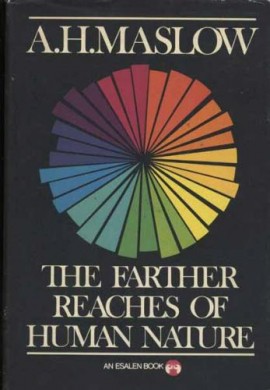
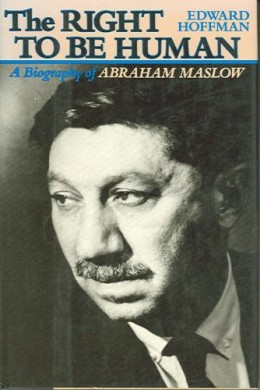

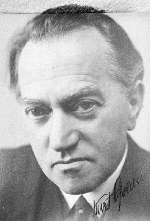

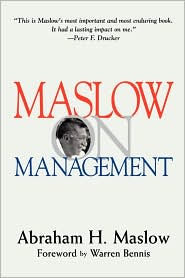
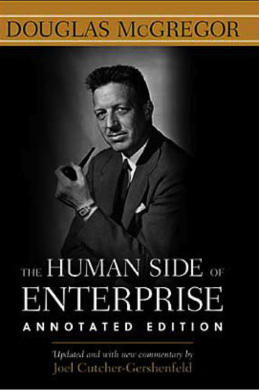
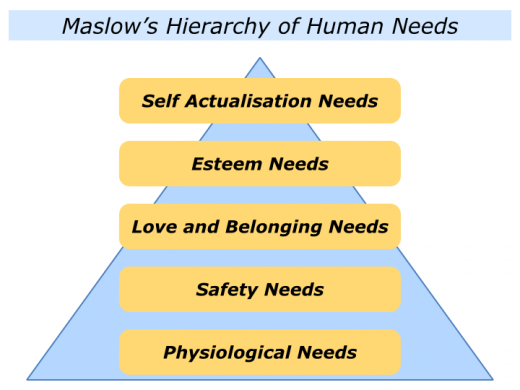
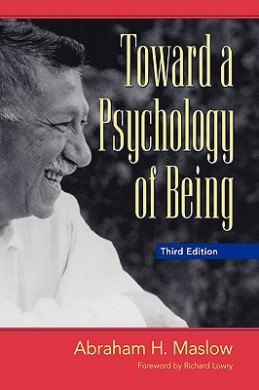
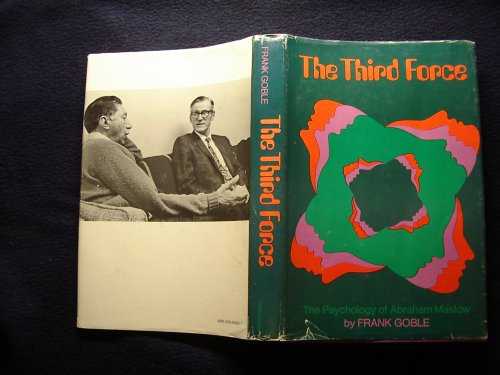
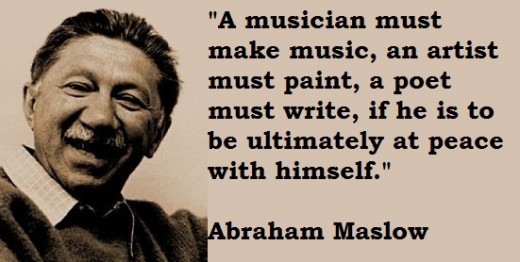




[…] Abraham Maslow […]